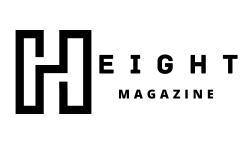Essential Traits of Leading Risk Adjustment Coding Companies in 2025

The pressure to maintain compliance, protect revenue, and accurately capture patient risk has made the choice of Risk Adjustment Coding Companies more critical than ever for health plans and provider groups. With regulatory changes like CMS V28 reshaping risk models, organizations must partner with vendors that not only understand coding mechanics but also bring innovation, reliability, and collaboration to the table. The companies that stand out in 2025 are the ones that have evolved beyond transactional services and become true strategic partners.
Deep Clinical Expertise Backed by Technology The strongest firms blend human expertise with advanced technology. Skilled coders and CDI specialists remain the backbone of accuracy, but when paired with AI-driven tools, their impact multiplies. Natural language processing and intelligent chart prioritization are now standard, surfacing hidden conditions and documentation gaps that manual reviews might miss. This marriage of clinical knowledge and tech ensures coding is both precise and efficient.
Commitment to Compliance and Audit Readiness The audit environment has grown more aggressive, with RADV reviews and CMS scrutiny leaving little room for error. Leading companies recognize that coding is not just about capturing diagnoses—it’s about ensuring every code is defensible. They embed compliance into their workflows, provide transparent audit trails, and continuously train teams on evolving guidelines to minimize risk exposure for their clients.
Scalability Without Losing Quality In an era where patient volumes fluctuate and data sets grow larger, scalability is essential. Top vendors can expand services across multispecialty networks or regional health plans while maintaining accuracy and timeliness. Their processes are built to handle high-volume demands without sacrificing attention to detail or compliance standards.
Strong Provider Engagement Programs What separates average firms from leaders is how they involve providers. The best companies don’t simply code charts—they collaborate with clinicians to improve documentation practices at the source. Through feedback loops, real-time query support, and education, they help providers see documentation not as an administrative burden but as a clinical necessity tied to both patient care and revenue integrity.
Data-Driven Insights for Long-Term Strategy Risk adjustment is more than a year-to-year exercise; it’s a driver of strategic planning. Forward-thinking companies deliver dashboards, analytics, and insights that go beyond coding accuracy. They help health plans understand population trends, predict RAF score fluctuations, and prepare for future model changes. This shift from service provider to strategic advisor is what health plans value most.
Conclusion As regulatory expectations tighten and technology accelerates, health plans can no longer afford to choose partners that only meet the minimum requirements. The leaders in 2025 set themselves apart by combining clinical expertise, compliance rigor, scalable processes, and collaborative engagement. For organizations seeking to strengthen both financial performance and audit defensibility, the defining edge lies in selecting Risk Adjustment Coding Companies that embody these essential traits.




